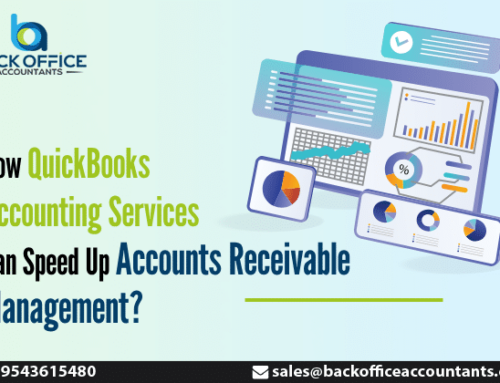Accounts Receivable is a fuel that makes the financial engine run. But AR is not as easy as procuring fuel to run the engine. An effective Accounts Receivable process needs a clear strategy and perfect execution to achieve reliable income streams for running everything smoothly and efficiently.
Every small and medium business owner must be completely in grip with the Accounts Receivable process in accounting, for it provides the lifeblood for your business. If you are a small and medium business looking to improve your Accounts Receivable, then this blog is for you.
Having worked with hundreds of small and medium business, our experts at Back Office Accountants have identified five key practices which can improve a lagging Accounts Receivable process and they are as follows:
1. Automate Accounts Receivable: Almost all the Accounts Receivable problems faced by the small and medium business can be easily solved by automating the Accounts Receivable process. All the menial and manual process which are error-prone – updating customer accounts, information, and invoice approval, recording payments and sending payment reminders can be streamlined and automated. When all these manual tasks are automated, accounting staff has more time on their hands to focus on more important and strategic tasks like negotiating terms and conditions, resolving customer disputes and improving vendor relationships.
2. Have a Standard Credit Approval Process: Having a clear and standard procedure to issue a credit to the customers can significantly improve your Accounts Receivable for fair margin. What usually happens is that the encouragement given to the sales team in terms of incentives will result in excess credit, extended deadlines and tax payment terms which obviously can cause problems in the longer run.
So standard guidelines on assessing credit limits, periods for approval or rejection of credit applications and strict policies on when to grant credit, extend credit limits or put a hold on accounts can form a solid base for a productive Accounts Receivable policy.
3. Centralized Data: Even businesses with the most advanced and productive Accounts Receivable process also often get budged by ageing and error-prone data which slowly creeps into their excel sheets over time. Duplicate records, outdated payment agreements, customer details, and unsupervised accounting procedures often cause financial discrepancies like unexplained discounts, payment terms, arrangements and even credit limits.
You can avoid all these above problems by having a standard customer data portal that consists of all the negotiated payment terms, tax rates, discounts, return policies & credit limits. By ensuring all the information is perfectly reflected in the billing and collection systems, a business can ensure that the entire AR cycle is perfectly executed without any financial discrepancies or inefficiencies.
4. Invoicing, Billing & Collection: You have a standard credit approval process and got centralized master data, the next step you can focus on is the invoicing and collection. Small businesses due to their limited access and increased dependency on capital stand to lose a lot due to late payments. While these payments cannot be completely avoided, efforts can be put to reduce the instances by a significant margin.
It is quite common for a business to commit terrors in invoicing or even delay the invoicing, causing late payments. With automation, you can avoid errors and streamline the invoicing process to help you avoid late payments. Automation tools for invoice generation, an electronic billing system for billing and a custom portal for payment tracking can bring visibility and improve the entire billing and payment cycle.
Even after you diligently sending all the invoices in a timely fashion, your customers can end up with late payments – the best thing you can do is to ensure you collect it as soon as possible by engaging in consistent strong and frequent collection efforts. Have a standard procedure that involves different e-mail templates for requests followed by manual follow-up and intervention. You can also dangle payment discounts, revised payment conditions and more to improve the collection process as well.
Though the above steps can help businesses guide their Accounts Receivable process, it is not completely possible to implement them without adequate resources and also expertise in the Accounts Receivable Process. On top of it, if you are a small and medium business with budget constraints investing in additional resources or dedicated Accounts Receivable Services may not be practical for you. However, you can accrue all the benefits of a dedicated Accounts Receivable Services by outsourcing your Accounts Receivable Process to expert remote accounting firms like Back Office Accountants.
At Back Office Accountants, our team of CPAs and accounting experts help you strategize an efficient Accounts Receivable process for your business and execute it to perfection at an affordable price point. You can contact us here: https://www.backofficeaccountants.com/








